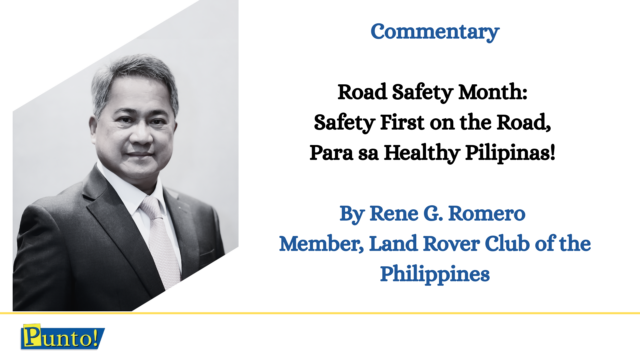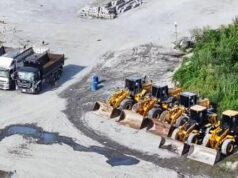THIS MAY, as we observe Road Safety Month under the theme “Safety First on the Road, Para sa Healthy Pilipinas!” we raise our collective voice to demand real action, bold reforms, and lasting accountability in the name of road safety.
The continued rise in traffic-related deaths, road rage, and preventable accidents in our country is a direct result of a broken system not just individual negligence. Let us be clear: our current road safety situation is not simply a matter of driver behavior, it is the outcome of institutional failure, corruption, and poor governance. From how we issue licenses, to how we maintain our roads, to how we enforce traffic rules, the system is failing the Filipino people.
First, the licensing system under the Land Transportation Office (LTO) remains highly flawed. It is disturbingly easy to obtain a driver’s license in the Philippines even without proper training, adequate knowledge of traffic laws, or real driving experience. This has led to thousands of unqualified drivers operating vehicles on our roads every day, creating chaos, endangering lives, and contributing to a culture of impunity.
Even more troubling, some LTO personnel tasked to monitor road activity are tolerating obvious violations. I have seen, multiple times, LTO officers standing by and allowing tricycles and motorcycles to operate on national highways a clear violation of road classifications. This negligence signals either incompetence or indifference both of which are unacceptable.
Motorcyclists, for their part, continue to be among the most problematic road users. Many lack basic road courtesy, cut lanes recklessly, disregard traffic signals, and endanger other motorists. Meanwhile, some traffic enforcers themselves do not fully understand the laws they are expected to enforce, leading to frequent disputes, confusion, and arbitrary implementation.
It is also important to highlight one of the most overlooked dangers on our roads today: the widespread use of unworthy and unsafe vehicles, particularly among public utility vehicles commercial and quarry trucks.
These vehicles, often poorly maintained and structurally compromised, pose serious threats to road safety. Many PUVs, commercial and quarry trucks continue to operate despite failing basic safety and emissions checks. Their brakes are unreliable, their lights are non-functional, and their tires are worn turning them into potential death traps on busy roads. These vehicles are not only dangerous because of their physical condition; they are often operated by drivers who are poorly trained and inadequately supervised. In some cases, overloaded commercial and quarry trucks traverse narrow provincial and barangay roads, damaging infrastructure and putting pedestrians and smaller vehicles at risk.
On our expressways, accidents are frequently worsened by the lack of clear emergency protocols. During road mishaps, operators must ensure that at least one lane remains open to allow emergency response teams to arrive without delay. Unfortunately, this basic protocol is often ignored, further endangering lives.
In light of all these, we call on the national government, LTO, DOTr, LGUs, MMDA, and expressway operators to implement urgent reforms:
- Overhaul the driver licensing process, enforce strict theoretical and practical/actual testing, eliminate fixers, and shut down illegitimate driving schools.
- Conduct nationwide re training and certification of traffic enforcers to ensure consistent, competent enforcement of road rules.
- Strictly prohibit tricycles and other unauthorized vehicles from highways, and subject all motorcyclists to mandatory safety training and continuous education. 4. Ban the operation of unworthy vehicles. Ensure that all PUVs, buses, commercial and quarry trucks undergo regular, transparent roadworthiness inspections. Immediate penalties must be imposed on violators.
- Mandate expressway concessionaires to implement emergency lane protocols and invest in real-time incident management systems.
- Adopt international standards in road safety enforcement, driver education and licensing, and infrastructure development, using successful models from Singapore, Japan, Australia, Dubai, and the United States.
- Upgrade infrastructure more visible signage, lighting, railings, pedestrian lanes, traffic calming devices, and better road design, particularly in accident-prone areas.
Let us be reminded: Road safety is a right of every Filipino. It is a matter of life and death not just for drivers and passengers, but for pedestrians, workers, children, and entire communities.
This Road Safety Month, we demand more than awareness. We demand action. Fix the system. Professionalize enforcement. End corruption. And build a road network worthy of a Healthy, Safe, and Progressive Pilipinas.
Para sa lahat ng nagmamaneho nang tama, sumusunod sa batas, at nais ng ligtas na biyahe para sa kanilang pamilya—this advocacy is for you. Let us not wait for more lives to be lost. Let us act now!





